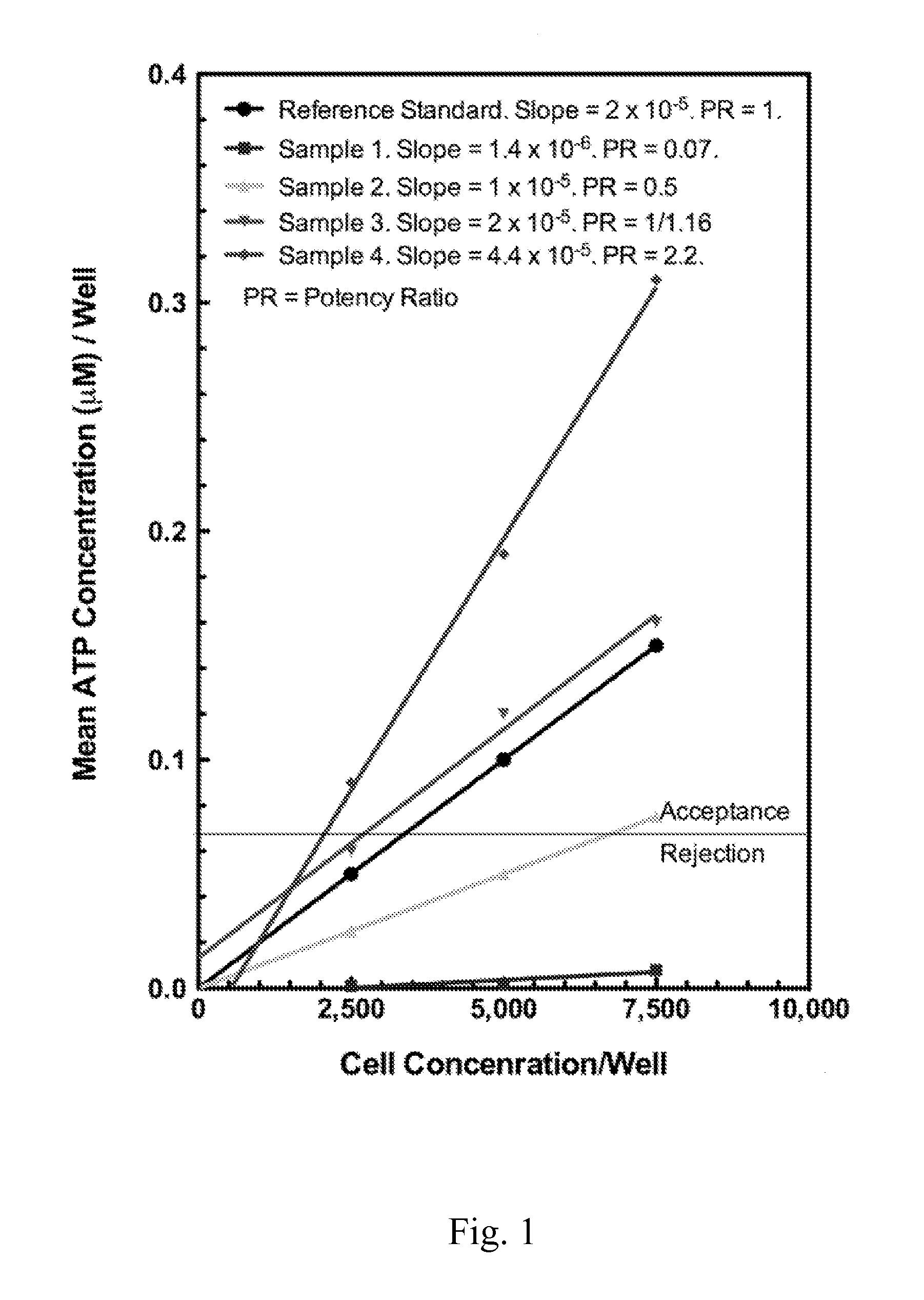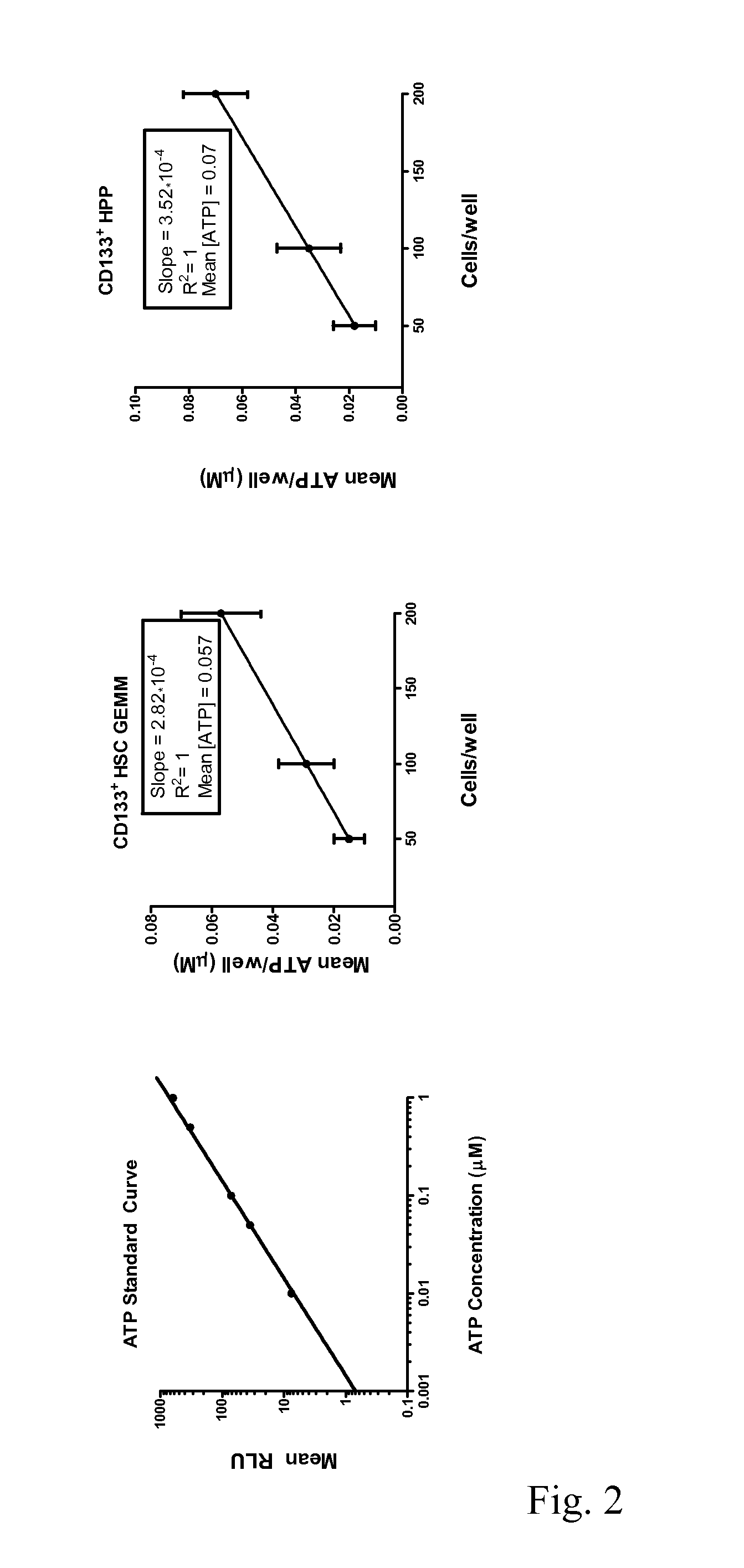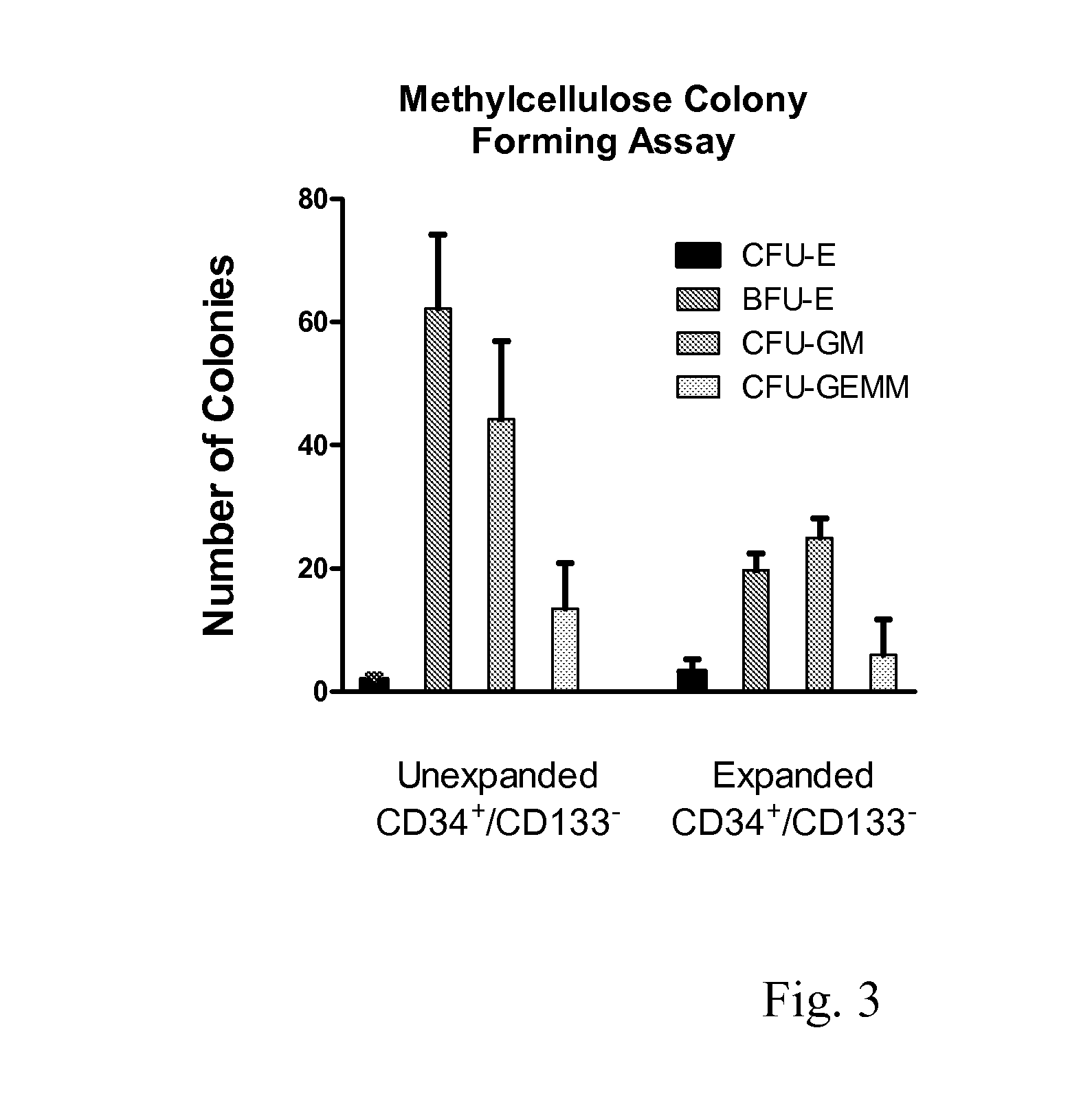Enhanced Hematopoietic Stem Cell Engraftment
a technology of hematopoietic stem cells and engraftment, which is applied in the field of enhanced hematopoietic stem cells, can solve the problems of cord blood hsc transplants, donor-recipient matching for bm-derived hsc transplants is a significant challenge, and the count of hscs in the cb unit may be lower than the threshold needed, so as to improve the transplant potential and engraftment
- Summary
- Abstract
- Description
- Claims
- Application Information
AI Technical Summary
Benefits of technology
Problems solved by technology
Method used
Image
Examples
example 1
Preparation of Human Cord Blood MNC
[0111]Using a Syringe-Stopcock-extension unit, equal volumes of Prepacyte®-WBC is added to umbilical cord blood (e.g. equal volume of Prepacyte®-WBC added to whole blood contained in bag). After mixing, plasma is separated from red blood cells by suspending cord blood bag vertically from a plasma extractor or a retort stand with three pronged clamps for 30 minutes. The plasma layer is removed from red blood cells and transferred to 50 mL, sterile conical flasks. The MNC cell fraction is pelleted at 400×g for 7-10 minutes, at room temperature. Supernatant fluid is aspirated from the total nucleated cell (TNC) pellet. Pellets are resuspended in 1 mL PBS containing 0.5% BSA and 2 mM EDTA (PBE). Cell number and viability are assessed using a hemacytometer or Guava Viacount reagents.
example 2
Immuno-Magentic MACS Separation of CD34+ Cells from TNC Fraction
[0112]A TNC pellet is resuspended in 300 μL PBE per 1×108 TNC and 100
[0113]μL FcR block added along with 100 μL CD34+ microbeads. The mixture is gently swirled and allowed to stand for 30 minutes in a refrigerator. Thereafter the cells are washed twice with 30 mL of PBE and the cells pelleted at 300×g for 10 minutes at 2-8° C. The cell pellet is resuspended in 1 mL PBE per 1×108 TNC. AutoMACS™ Pro is used to purify the CD34 cells labeled with the CD341 immunomagnetic beads as follows. CD34− cells are pelleted at 300×g for 7-10 minutes at 2-8° C. and resuspended in 0.5-1.0 mL of HSC re-suspension media (EndGenitor). Cell number and viability are assessed using Viacount® reagents and Guava® EasyCyte or by using a hemacytometer and trypan blue. Purity of the CD34− cells is confirmed by labeling isolated cells with fluorescently labeled, anti-human CD34− antibody and Guava® EasyCyte. Purified cells are cryopreserved and sto...
example 3
Immuno-Magentic MACS Separation of CD133+ Cells from TNC Fraction
[0114]Approximately 1×108 TNC is resuspended in 300 μL PBE. About 100 μL FcR block is added to 1×108 TNC and incubated at 2-8° C. for 10 minutes. Thereafter, about 50 μL CD133+ microbeads are added and incubated for 20 minutes in 2-8° C. refrigerator. The mixture is then washed with 30 mL of PBE, pelleted at 300×g for 10 minutes at 2-8° C., and resuspended in 1 mL PBE. CD133+ cells are purified using the AutoMACS™ Pro to isolate the CD133+ cells labeled with the CD133+ immunomagnetic beads. Following purification of CD133+ cells on magnetic columns, CD133+ cells are pelleted at 300×g for 7-10 minutes at 2-8° C. and resuspended in 0.5-1.0 mL of EGT HSC re-suspension media. Cell number and viability are assessed using Viacount® reagents and Guava® EasyCyte (or use hemacytometer and trypan blue). Purity of CD1331 cells is confirmed by labeling isolated cells with fluorescently labeled, anti-human CD133+ antibody and Guava...
PUM
 Login to View More
Login to View More Abstract
Description
Claims
Application Information
 Login to View More
Login to View More - R&D
- Intellectual Property
- Life Sciences
- Materials
- Tech Scout
- Unparalleled Data Quality
- Higher Quality Content
- 60% Fewer Hallucinations
Browse by: Latest US Patents, China's latest patents, Technical Efficacy Thesaurus, Application Domain, Technology Topic, Popular Technical Reports.
© 2025 PatSnap. All rights reserved.Legal|Privacy policy|Modern Slavery Act Transparency Statement|Sitemap|About US| Contact US: help@patsnap.com



